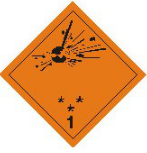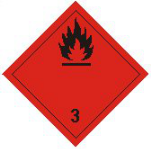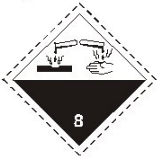Haz Classification System
The UN Model Regulations use a classification system in which each dangerous substance or article is assigned to a CLASS, depending on the nature of the danger it presents. There are 9 Classes, some of which are sub-divided:
Class 1 – Explosives

Class 2 – Gases

Division 2.1 Flammable gas
Division 2.2 Non-flammable non toxic gas
Division 2.3 Toxic gas
Class 3 – Flammable liquids

Class 4 – Other flammables

Division 4.1 Flammable solids
Division 4.2 Substances liable to spontaneous combustion
Division 4.3 Substances which, in contact with water, emit flammable gases
Class 5

Division 5.1 Oxidising agents
Division 5.2 Organic peroxides
Class 6

Division 6.1 Toxic substances
Division 6.2 Infectious substances
Class 7 – Radioactive materials

Class 8 – Corrosives

Class 9 – Miscellaneous

Class 9 includes items such as asbestos, automotive airbags, lithium batteries and environmentally hazardous substances which don’t fit into any of the other 8 classes.
Whilst the CLASS defines the type of danger which a substance presents, a second classification, called the PACKING GROUP (PG) defines just how dangerous it is. There are three Packing Groups; PG I is the most dangerous, PG II represents a moderate danger and PG III is the least dangerous. Packing Groups are always written in Roman numerals to differentiate them from the Class numbers.
It is possible for a substance to appear in more than one Packing Group, depending on its concentration. For example, concentrated sulphuric acid is Class 8, PG II. A mild solution of the same acid, which might be marketed as a domestic drain cleaner, is still allocated to Class 8, but because of its lesser corrosivity could be PG III.

